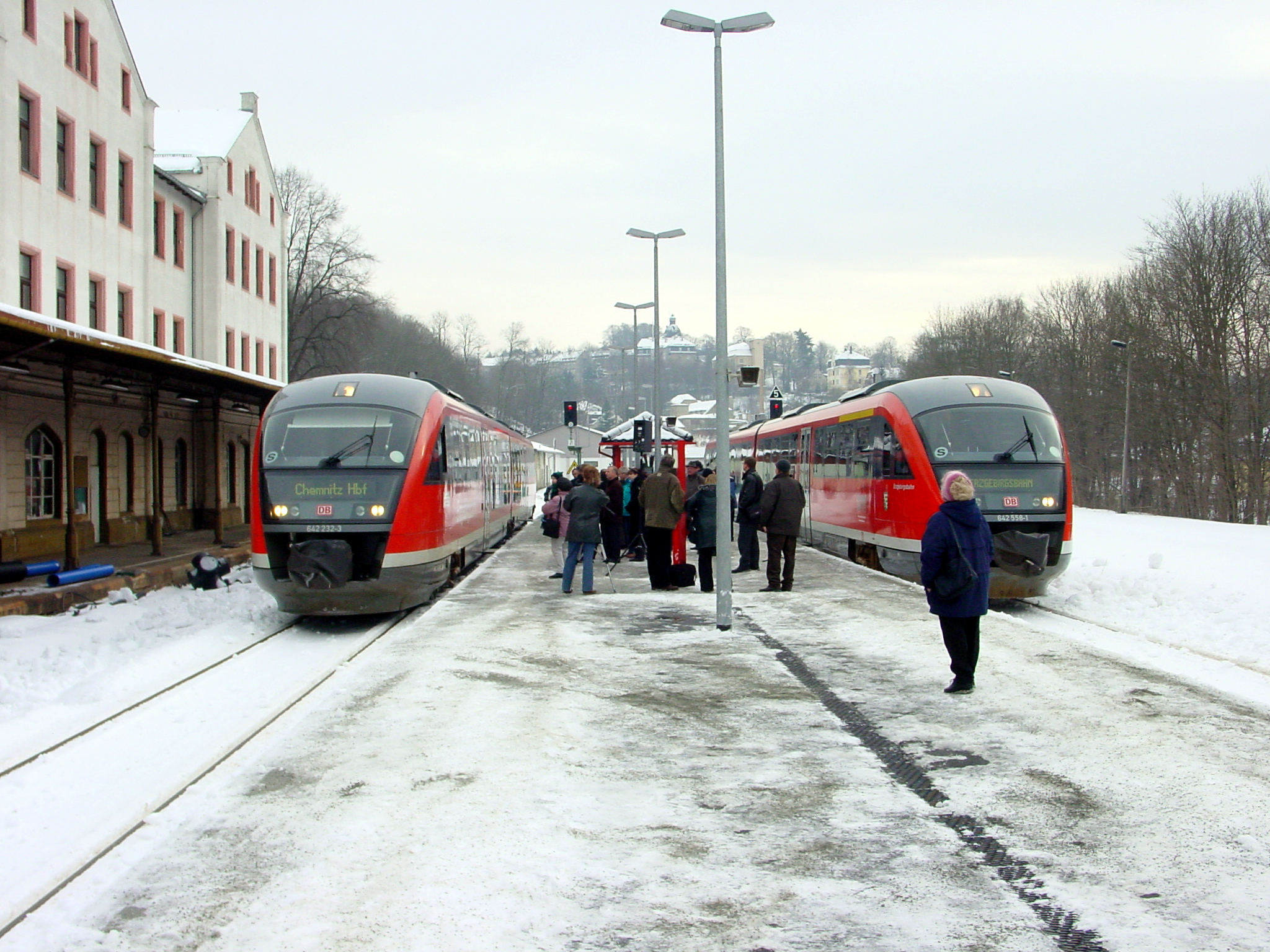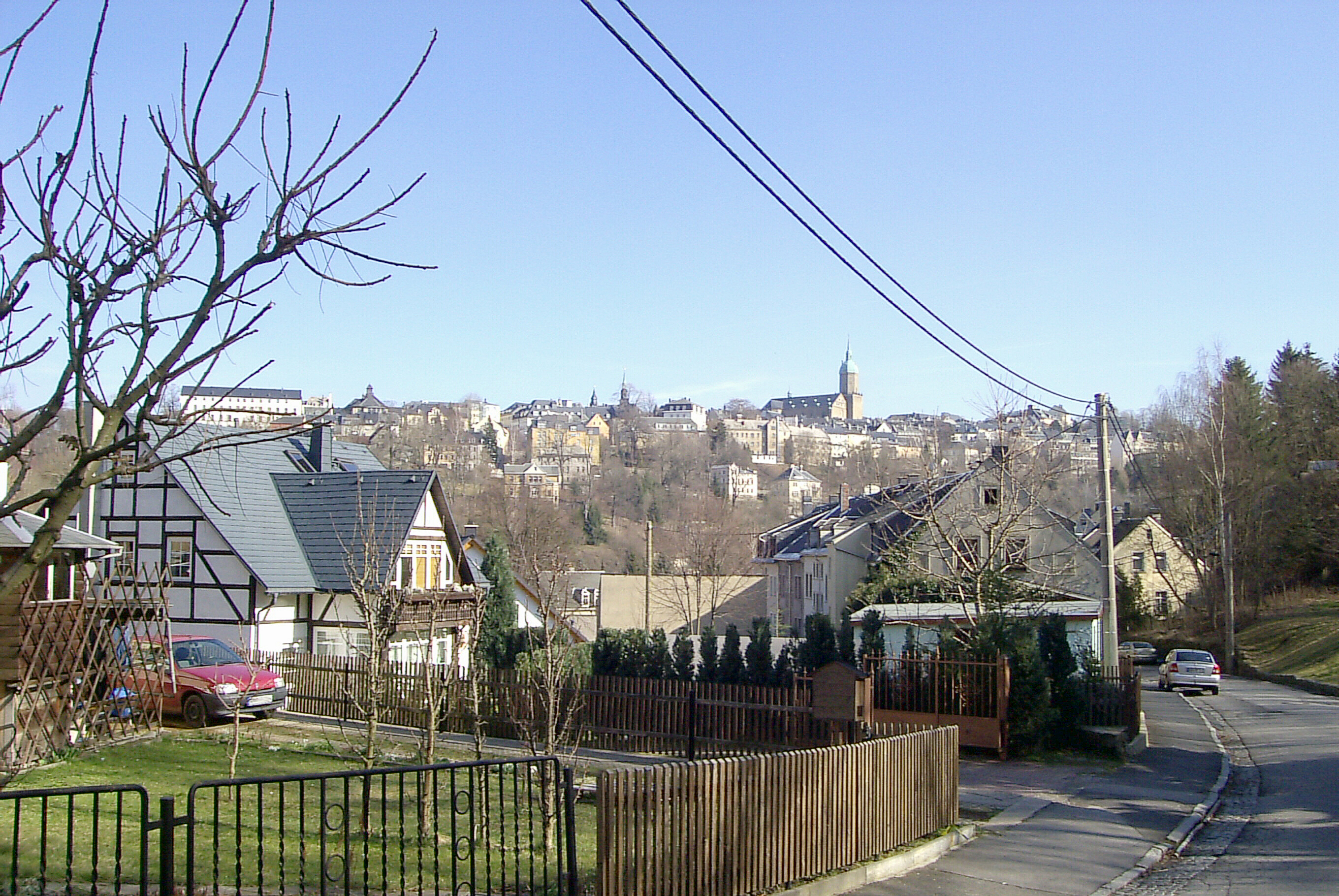|
Sehmatal
Sehmatal is a municipality in the district of Erzgebirgskreis, in Saxony, Germany, which was created in 1999 through the union of ''Neudorf'', ''Cranzahl'' and ''Sehma''. The three villages are located along the Sehma river, aligned in a north-south direction. At the northern end is the former village of Sehma, in the middle the town of Cranzahl, to the south the village of Neudorf. The town borders to Annaberg-Buchholz in the north, in the east is Königswalde and Bärenstein, Oberwiesenthal is south and Crottendorf in the west. Nearby is the Bärenstein mountain with a height of 898 meters. The trains along Vejprty–Annaberg-Buchholz railway stop in Sehma and Cranzahl. The station in Cranzahl is also the starting point for the Fichtelberg Railway to Oberwiesenthal. Neudorf is the home town of Olympic gold medalist Viola Bauer. Sehmatal's sister city in the United States is Running Springs, California. History From 1952 to 1990, the constituent localities of Sehmatal (Neu ... [...More Info...] [...Related Items...] OR: [Wikipedia] [Google] [Baidu] |
Sehmatal
Sehmatal is a municipality in the district of Erzgebirgskreis, in Saxony, Germany, which was created in 1999 through the union of ''Neudorf'', ''Cranzahl'' and ''Sehma''. The three villages are located along the Sehma river, aligned in a north-south direction. At the northern end is the former village of Sehma, in the middle the town of Cranzahl, to the south the village of Neudorf. The town borders to Annaberg-Buchholz in the north, in the east is Königswalde and Bärenstein, Oberwiesenthal is south and Crottendorf in the west. Nearby is the Bärenstein mountain with a height of 898 meters. The trains along Vejprty–Annaberg-Buchholz railway stop in Sehma and Cranzahl. The station in Cranzahl is also the starting point for the Fichtelberg Railway to Oberwiesenthal. Neudorf is the home town of Olympic gold medalist Viola Bauer. Sehmatal's sister city in the United States is Running Springs, California. History From 1952 to 1990, the constituent localities of Sehmatal (Neu ... [...More Info...] [...Related Items...] OR: [Wikipedia] [Google] [Baidu] |
Sehma (river)
The Sehma is a right tributary of the river Zschopau in the German federal state of Saxony and begins at the confluence of its headstreams the ''White Sehma'' (''Weiße Sehma'') and ''Red Sehma'' (''Rote Sehma''). *The ''White Sehma'' rises in the Ore Mountains on the Fichtelberg (1,214 m) and flows northwards, parallel to the Zschopau. *Above Neudorf it merges with the ''Red Sehma'' coming from Kretscham-Rothensehma (a district of Sehmatal), which enters from the right and itself begins at the confluence of the ''Lampertsbach'' and ''Stümpelbach'' streams a few kilometres earlier. In the valley of the combined Sehma are the long, narrow villages of Neudorf, Cranzahl and Sehma which belong to the municipality of Sehmatal. The Sehma continues to the merged town of Annaberg-Buchholz where it divides Buchholz in the west from Annaberg in the east, the two quarters having been independent towns until 1945. The Sehma valley is also home to the village of Frohnau and its well-kno ... [...More Info...] [...Related Items...] OR: [Wikipedia] [Google] [Baidu] |
Vejprty–Annaberg-Buchholz Railway
The Vejprty–Annaberg-Buchholz railway (german: Bahnstrecke Vejprty–Annaberg-Buchholz unt Bf) is a branch line in the Czech Republic and the German state of Saxony. The line extends the Chomutov–Vejprty/Reitzenhain railway at Vejprty (Weipert), crossing the Czech-German border and running via Cranzahl to Annaberg-Buchholz. It has been operated since 2001 by Erzgebirgsbahn, which is part of DB Regio. History After the opening of the Chemnitz–Annaberg line in 1866, the ''Annaberger Eisenbahncomitee'' (Annaberg railway committee) called for a continuation of the line through the Ore Mountains (Erzgebirge) to Bohemia. At the time, the only line on the south side of the Erzgebirge was the Aussig-Teplitz Railway (''Aussig-Teplitzer Eisenbahn''), connecting Aussig (now Ústí nad Labem) and Teplitz (now Teplice). On 28 August 1865, the Annaberg committee finally procured the grant of a concession by the Austrian government for a "Bohemian–Saxon connecting railway" (''Säch ... [...More Info...] [...Related Items...] OR: [Wikipedia] [Google] [Baidu] |
Oberwiesenthal
Oberwiesenthal (; officially Kurort Oberwiesenthal) is a town and a ski resort in the district of Erzgebirgskreis in Saxony in Germany. It is situated in the Ore Mountains, on the border with the Czech Republic, 19 km south of Annaberg-Buchholz, and 23 km northeast of Karlovy Vary. At , it is the highest town in Germany.Official web site (in German) The and goldmedalist in |
Running Springs, California
Running Springs is a census-designated place (CDP) in San Bernardino County, California, United States. The population was 5,268 at the 2020 census, up from 4,862 at the 2010 census. Running Springs is situated 17 miles west of the city of Big Bear Lake. Running Springs is home to the 3,400-acre National Children’s Forest, which offers interpretive programs, educational tours and more. Snow Valley Mountain Resort was established here in the 1920s and was the first ski resort in the San Bernardino Mountains. History The first people to settle here were the Serrano people (“mountain people”). They got their name from Spanish priest Father Garces in 1776, but called themselves Yuhaviatam (“people of the pines”). Numerous mortar holes can be seen throughout the area, made by the Serranos grinding acorns into meal. Native Americans settled here due to the rich natural resources. They gathered acorns and herbs, also hunting deer, rabbits and other wildlife. Running Springs ... [...More Info...] [...Related Items...] OR: [Wikipedia] [Google] [Baidu] |
Erzgebirgskreis
Erzgebirgskreis is a district ('' Kreis'') in the Free State of Saxony, Germany. It is named after the Erzgebirge ("Ore Mountains"), a mountain range in the southern part of the district which forms part of the Germany–Czech Republic border. It borders (from the west and clockwise) the districts of Vogtlandkreis and Zwickau, the urban district Chemnitz, the district Mittelsachsen and the Czech Republic. History The district was established by merging the former districts of Annaberg, Aue-Schwarzenberg, Stollberg and Mittlerer Erzgebirgskreis as part of the district reform of August 2008. Geography The district contains the western part of the Erzgebirge, which also forms the border with the Czech Republic. Several rivers that rise in the Erzgebirge flow through the district, including Zwickauer Mulde and Zschopau. Sister districts The Erzgebirgskreis has partnerships with the following districts: [...More Info...] [...Related Items...] OR: [Wikipedia] [Google] [Baidu] |
Bärenstein
Bärenstein is a municipality in the district of Erzgebirgskreis, in Saxony, Germany. History From 1952 to 1990, Bärenstein was part of the Bezirk Karl-Marx-Stadt of East Germany East Germany, officially the German Democratic Republic (GDR; german: Deutsche Demokratische Republik, , DDR, ), was a country that existed from its creation on 7 October 1949 until its dissolution on 3 October 1990. In these years the state .... References Erzgebirgskreis {{Erzgebirgskreis-geo-stub ... [...More Info...] [...Related Items...] OR: [Wikipedia] [Google] [Baidu] |
Königswalde
Königswalde is a municipality in the district of Erzgebirgskreis, in Saxony, Germany. History From 1952 to 1990, Königswalde was part of the Bezirk Karl-Marx-Stadt of East Germany East Germany, officially the German Democratic Republic (GDR; german: Deutsche Demokratische Republik, , DDR, ), was a country that existed from its creation on 7 October 1949 until its dissolution on 3 October 1990. In these years the state .... References Sources * External links * Erzgebirgskreis {{Erzgebirgskreis-geo-stub ... [...More Info...] [...Related Items...] OR: [Wikipedia] [Google] [Baidu] |
Crottendorf
Crottendorf is a municipality located in the district of Erzgebirgskreis, in Saxony, Germany. History From 1952 to 1990, Crottendorf was part of the Bezirk Karl-Marx-Stadt of East Germany East Germany, officially the German Democratic Republic (GDR; german: Deutsche Demokratische Republik, , DDR, ), was a country that existed from its creation on 7 October 1949 until its dissolution on 3 October 1990. In these years the state .... References Erzgebirgskreis {{Erzgebirgskreis-geo-stub ... [...More Info...] [...Related Items...] OR: [Wikipedia] [Google] [Baidu] |
Saxony
Saxony (german: Sachsen ; Upper Saxon: ''Saggsn''; hsb, Sakska), officially the Free State of Saxony (german: Freistaat Sachsen, links=no ; Upper Saxon: ''Freischdaad Saggsn''; hsb, Swobodny stat Sakska, links=no), is a landlocked state of Germany, bordering the states of Brandenburg, Saxony-Anhalt, Thuringia, Bavaria, as well as the countries of Poland and the Czech Republic. Its capital is Dresden, and its largest city is Leipzig. Saxony is the tenth largest of Germany's sixteen states, with an area of , and the sixth most populous, with more than 4 million inhabitants. The term Saxony has been in use for more than a millennium. It was used for the medieval Duchy of Saxony, the Electorate of Saxony of the Holy Roman Empire, the Kingdom of Saxony, and twice for a republic. The first Free State of Saxony was established in 1918 as a constituent state of the Weimar Republic. After World War II, it was under Soviet occupation before it became part of the communist East Ger ... [...More Info...] [...Related Items...] OR: [Wikipedia] [Google] [Baidu] |
Annaberg-Buchholz
Annaberg-Buchholz () is a town in Saxony, Germany. Lying in the Ore Mountains, it is the capital of the district of Erzgebirgskreis. Geography The town is located in the Ore Mountains, at the side of the ''Pöhlberg'' ( above sea level). History The previously heavily forested upper Ore Mountains were settled in the 12th and 13th centuries by Franconian farmers. Frohnau, Geyersdorf, and Kleinrückerswalde—all now part of present-day town—are all attested from 1397. Barbara Uthmann introduced braid- and lace-making in 1561 and it was further developed in the 1590s by Belgian refugees fleeing the policies of Fernando Álvarez de Toledo, 3rd Duke of Alba, Spain's governor over the Low Countries. The industry was further developed in the 19th century, when Annaberg and Buchholz were connected by rail to Chemnitz and each other and both settlements had specialized schools for lace-making. The population of Annaberg in the 1870s was 11,693. This had risen to 16,811 by 1905, ... [...More Info...] [...Related Items...] OR: [Wikipedia] [Google] [Baidu] |

-Deutschland.png)

